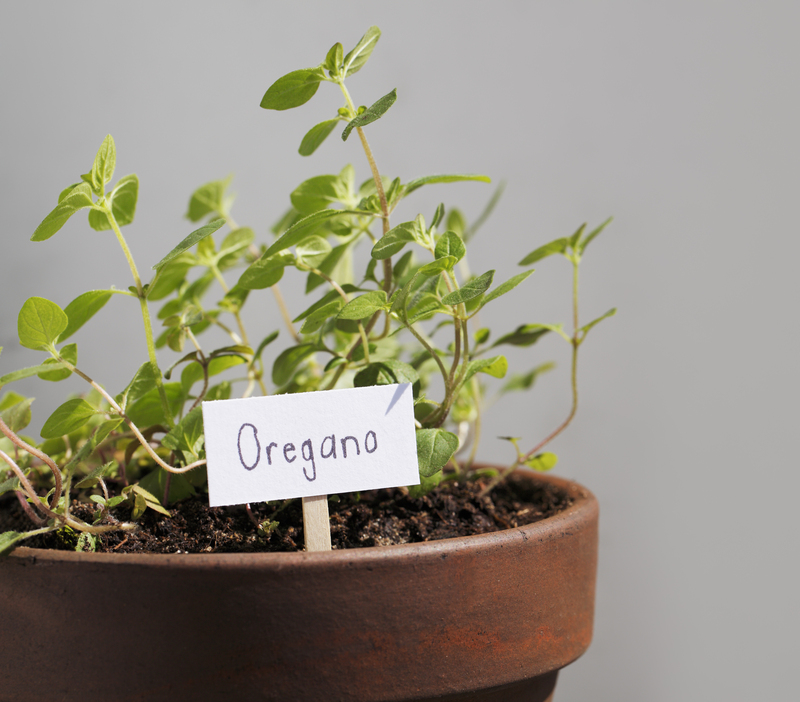Garden Resurgence: Steps to Begin Revitalizing Neglected Spaces
Posted on 31/08/2025
Garden Resurgence: Steps to Begin Revitalizing Neglected Spaces
A neglected garden can often feel like an overwhelming challenge. Weeds thrive, soil hardens, and plants succumb to neglect, making these spaces less inviting or even unusable. But with commitment, vision, and systematic action, any garden can be brought back to life. This comprehensive guide, focused on garden resurgence, shares actionable steps for revitalizing neglected spaces and transforming them into lush, thriving landscapes that delight the senses and boost property value.
Why Prioritize Garden Renewal?
Restoring an overlooked garden brings a multitude of benefits. A rejuvenated outdoor area offers a serene retreat, fosters biodiversity, and increases curb appeal. Studies show that green spaces can improve mental well-being, encourage outdoor activity, and enrich community connections. Moreover, investing in garden regeneration often raises property values, attracting potential buyers or tenants.
- Mental Health: Exposure to nature is proven to reduce stress and anxiety.
- Environmental Impact: Revived gardens encourage pollinators and native wildlife.
- Social and Aesthetic Advantages: Eye-catching gardens create welcoming atmospheres for gatherings.
Whether dealing with a small urban yard or a sprawling rural plot, the principles of garden revival remain similar. Let's break down the essential steps and considerations to restore your garden to glory.

Assessing the State of Your Neglected Garden
Conduct a Comprehensive Garden Audit
Before any transformation, it's crucial to thoroughly evaluate your existing garden. This initial assessment will inform your revitalisation strategy and help prioritize what needs attention.
- Soil Quality: Test your soil for pH, composition, and compaction. Healthy soil is the foundation of garden resurgence.
- Existing Flora: Identify which plants are viable, which are invasive, and which should be replaced.
- Sunlight and Microclimates: Observe how sunlight moves through your space. Note shaded and sunny areas, as well as wind and drainage patterns.
- Structures and Hardscape: Assess the condition of fences, sheds, decking, pathways, or garden ornaments.
Document & Plan
Use photographs and sketches to document your findings. This helps track progress and envision possibilities. List elements you want to keep, replace, or introduce. As you complete your audit, note recurring themes: poor drainage, overgrown weeds, or damaged features, for targeted action later.
Decluttering and Clearing the Space
Remove Debris and Waste
The first physical step in garden resurgence involves clearing away accumulated debris. This includes:
- Fallen branches, leaves, and twigs
- Broken pots, rusted tools, and discarded items
- Dead plants, old mulch, and rotting wood
Organize waste into categories for recycling, composting, or disposal. If you encounter hazardous materials (like old chemicals), handle them according to local guidelines.
Tackle Weeds and Invasive Species
Persistent weeds often invade neglected gardens. For enduring garden restoration, manually remove them or use targeted organic weedkillers. Uprooting weeds, rather than simply cutting, prevents regrowth. Persistent effort over several weeks may be needed for a clear foundation.
Prune and Cut Back Overgrown Plants
Identify shrubs, trees, or climbers that have grown wild. Strategic pruning rejuvenates established plants and encourages healthy new growth. Remove dead, diseased, or tangled branches. For large trees, consider professional arborist services.
Soil Regeneration: The Heart of Garden Revitalization
Test and Amend the Soil
Healthy, living soil is the core of successful garden rejuvenation. Conduct a soil test to check pH and nutrient levels. Based on results:
- Add lime to raise pH or sulphur to lower it, if necessary.
- Apply compost, well-rotted manure, or organic matter to boost fertility and improve structure.
- Use mulch to suppress weeds and retain moisture.
Aeration and Drainage
Neglected soils are often compacted. Break up soil with a garden fork, aerator, or tiller. This improves drainage and creates room for roots and soil organisms.
Designing a New Garden Vision
Define Your Garden's Purpose
Before planting, clarify how you want to use the renewed space. Consider:
- Entertaining: Patios, seating, fire pits, or BBQ areas
- Wildlife Habitat: Ponds, log piles, native plants for bees and butterflies
- Productive Growing: Space for vegetables, fruit trees, or herb gardens
- Low-Maintenance Retreat: Perennials, drought-tolerant species, and mulching systems
*Tip: Create "garden rooms" or themed zones to maximize enjoyment and functionality.*
Choose a Style and Color Palette
Browse garden design guides and note styles that appeal. Whether you opt for a cottage garden, modern minimalism, or a wildlife haven, aligning plant choices and hardscaping with your chosen aesthetic leads to a cohesive result.
Draw a Planting Plan
Map out where trees, shrubs, flower beds, and features will go. Factor in mature sizes and growth habits, ensuring plants have room to thrive without overcrowding.
Plant Selection for Garden Regeneration
Focus on Soil-Appropriate and Climate-Resilient Species
Choose plants suited to your local climate and garden's unique microclimate. Native species generally require less maintenance, support local ecosystems, and withstand pests and diseases better.
Layer Plant Heights and Textures
For year-round interest and biodiversity, combine:
- Tall Trees and Shrubs: Provide structure, shade, and wildlife shelter.
- Perennials and Groundcovers: Fill beds with color, suppress weeds, and stabilize soil.
- Seasonal Annuals: Introduce bursts of color or scent at different times of year.
Incorporate Edible and Pollinator-Friendly Plants
Herbs, fruit bushes, or vegetable beds not only enhance your meals but also encourage bees and butterflies.
Restore and Enhance Hardscaping Features
Repair or Replace Existing Structures
Fix broken pathways, fences, arbors, and raised beds. Clean or repaint surfaces for longevity and aesthetics. Where elements are irreparable, plan for tasteful replacements.
Add New Elements for Comfort and Functionality
Consider installing:
- Seating areas for relaxation
- Lighting for evening ambiance
- Water features for tranquility
- Compost bins, water butts, or tool storage for sustainability
Planting and Ongoing Maintenance
Plant with Care
Install new plants during the correct season--usually spring or fall--to minimize stress. Water thoroughly, and add mulch around roots for moisture retention.
Establish a Maintenance Routine
Consistent care is key to sustaining your garden resurgence. Tasks include:
- Regular watering and mulching
- Seasonal feeding and pruning
- Ongoing weeding and pest checks
- Replenishing soil amendments annually
Set reminders or create a garden calendar to keep up with required tasks.
Sustainable Practices in Garden Renewal
Embrace Eco-Friendly Methods
For modern garden regeneration, prioritize sustainability:
- Organic Fertilizers: Use compost or natural amendments over chemicals.
- Rainwater Harvesting: Install water barrels to reduce tap water usage.
- Wildlife Shelters: Maintain log piles, insect hotels, and bird baths.
- Plant Diversity: Mix species for resilience and to attract beneficial insects.
Consider Permeable Paving and Mulching
Opt for gravel, mulch, or permeable paving to aid rainwater soakage and prevent runoff, supporting sustainable urban drainage.
Tips for a Lasting Garden Revival
- Start Small: If overwhelmed, focus on one section at a time.
- Reuse and Recycle: Repurpose found objects as planters or garden art.
- Invite Others: Garden workdays with friends or neighbors boost morale and productivity.
- Document the Journey: Keep garden journals or take before-and-after photos to appreciate progress.
- Invest in Quality Tools: A sharp spade, fork, and pruners save time and effort.

Common Mistakes to Avoid When Reviving Neglected Gardens
- Skipping Soil Improvement: Don't plant until soil is healthy.
- Overplanting: Crowding beds leads to future headaches and maintenance issues.
- Not Considering Future Growth: Allow space for plants to mature properly.
- Neglecting Maintenance: Establish regular routines to keep gardens thriving long-term.
Conclusion: Embrace the Joy of Garden Resurgence
Restoring neglected gardens is not just a matter of aesthetics--it's an act of stewardship, creativity, and care for both the environment and your personal well-being. With systematic action, thoughtful design, and an eye for sustainability, your garden can return to, or exceed, its former beauty. Take the first step toward revitalizing abandoned garden spaces today and unlock the potential waiting right outside your door.
Remember: Every great garden started as a blank, and sometimes even a neglected, canvas. Your resurgence journey will reward you with vibrant colors, flourishing life, and a renewed connection to nature.

